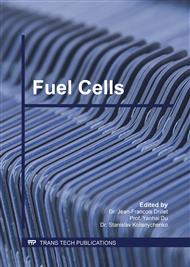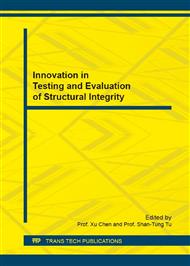p.389
p.394
p.399
p.405
p.410
p.419
p.425
p.431
p.436
Numerical Study on the Influence of Cathode Flow Channel Baffles on PEM Fuel Cell Performance
Abstract:
A proton exchange membrane (PEM) fuel cell is an electrochemical device that directly converts chemical energy of hydrogen into electric energy.The structure of the flow channel is critical to the PEM fuel cell performance. In this paper, the effect of the cathode flow channel baffles on PEM fuel cell performance was investigated numerically. A three-dimensional model was established for the PEM fuel cell which consisted of bipolar plates with three serpentine flow channels, gas diffusion layers, catalyst layers and PEM. Baffles were added in the cathode flow channels to study the effect of the cathode flow channel baffle on the PEM fuel cell performance. And then, numerical simulation for the PEM fuel cell with various cathode channel baffle heights ranging from 0.2 mm to 0.6 mm was conducted.The simulated results show that there existed an optimal cathode flow channel baffle height in terms of the electrochemical performance as all other parameters of the PEM fuel cell were kept constant. It is found that the PEM fuel cell had the good electrochemical performance as the flow channel baffle heights was 0.4mm in this work.
Info:
Periodical:
Pages:
410-415
Citation:
Online since:
September 2016
Authors:
Price:
Сopyright:
© 2017 Trans Tech Publications Ltd. All Rights Reserved
Share:
Citation:



